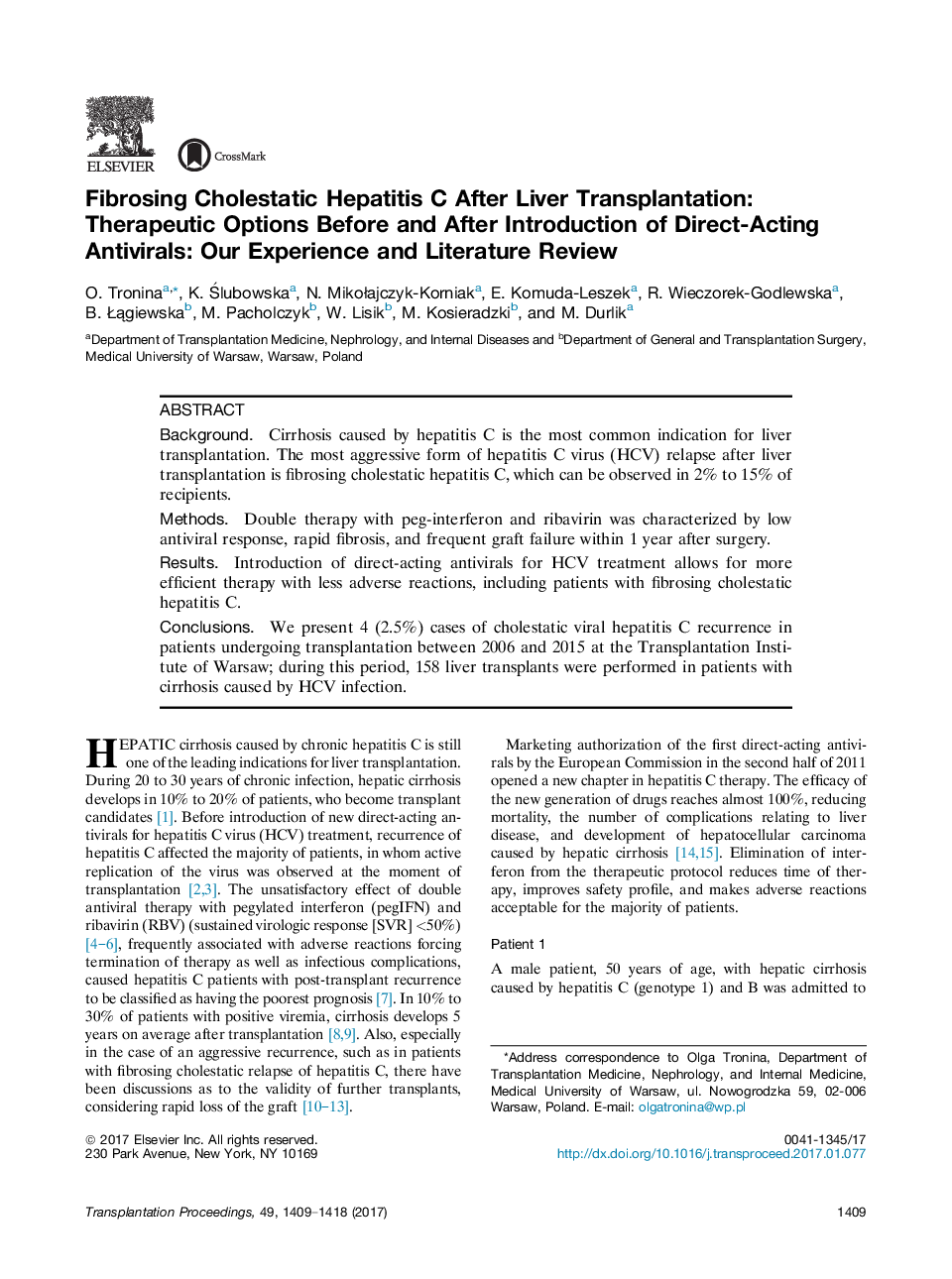| Article ID | Journal | Published Year | Pages | File Type |
|---|---|---|---|---|
| 5728702 | Transplantation Proceedings | 2017 | 10 Pages |
â¢We present 4 (2.5%) cases of cholestatic viral hepatitis C recurrence in patients undergoing transplantation.â¢Introduction of direct-acting antivirals for HCV treatment allows for more efficient therapy with less adverse reactions, including FCH patients.â¢Elimination of interferon from the therapeutic protocol improves safety profile.
BackgroundCirrhosis caused by hepatitis C is the most common indication for liver transplantation. The most aggressive form of hepatitis C virus (HCV) relapse after liver transplantation is fibrosing cholestatic hepatitis C, which can be observed in 2% to 15% of recipients.MethodsDouble therapy with peg-interferon and ribavirin was characterized by low antiviral response, rapid fibrosis, and frequent graft failure within 1 year after surgery.ResultsIntroduction of direct-acting antivirals for HCV treatment allows for more efficient therapy with less adverse reactions, including patients with fibrosing cholestatic hepatitis C.ConclusionsWe present 4 (2.5%) cases of cholestatic viral hepatitis C recurrence in patients undergoing transplantation between 2006 and 2015 at the Transplantation Institute of Warsaw; during this period, 158 liver transplants were performed in patients with cirrhosis caused by HCV infection.
